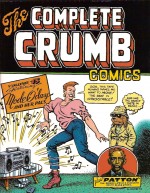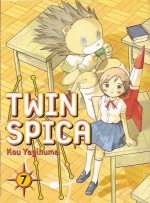
By Robert Crumb and others (Fantagraphics Books)
ISBN: 978-1-56097-413-0
Robert Crumb is a unique creative force in the world of comics and cartooning with as many foes as fans, but his idiosyncratic, unflinching, uncompromising, controversial and always bewitching work is impossible to ignore.
Therefore if intemperate language, putative blasphemy, artfully grotesque cartoon nudity, fetishism and comedic fornication are liable to upset you, stop reading this review and don’t buy the book. Stop reading now, check out an old, archived review instead or just come back tomorrow…
In 1987 Fantagraphics began the almost impossible task of collating, collecting and publishing the chronological totality of the artist’s output.
Son of a career soldier, Robert Dennis Crumb was born in Philadelphia in 1943 to a large and troubled family. After a tempestuous early life, he began working as an in-house art-drone at the American Greeting Cards Company and trading card giant Topps Publishing, married early and briefly before “dropping out†and joining the Counterculture movement, where he changed the nature of cartooning with such creations as Mr. Natural, Fritz the Cat, Devil Girl and a host of others.
Within a decade the explosively reactive underground movement was gone; dissipated, disillusioned, dropped back “in†or dead, with only a few notable independent and truly dedicated publishers staying the course. Always his own harshest critic and ever-searching for artistic perfection, in 1981 Crumb convinced Ron Turner of Last Gasp to publish a new anthology of underground/alternative/cutting edge commix in a new anthology.
Weirdo – with Crumb as editor and major contributor until 1983 when he handed over the editor’s role to his “discovery†Peter Bagge (who provides a fascinating introduction and overview for the tome under review here) – was, for many of us, the last bastion of a real gone world.
With the onus of deadlines and responsibility of magazine production removed Crumb resumed his quixotic search for artistic satisfaction…
Recently re-released, this 15th softcover volume (originally published in 2001) collects Crumb’s comic strips from Weirdo #9-15, assorted gags, private commissions, freelance illustration work, album covers and other pictorial ephemera plus strips from American Splendor and Zap Comix, covering the hedonistic, greed-soaked early 1980s which were such a painful anathema to someone of the Artist’s socialist/liberal leanings.
After Bagge’s aforementioned text recollections the graphic magic begins with the Crumb contributions in Weirdo #9 (Winter 1983-1984), a stunning and meticulous frontispiece, ‘Arline ‘n’ Bob and that Thing in the Back Bedroom’ – an autobiographical account of the “joys†of parenthood crafted in collaboration with second wife Aline Kominsky-Crumb plus the first snide and sardonic appearance of Reagan-era, appalling and avaricious anti-icon ‘Mode O’Day and Her Pals’ in a barbed observation of fame-hungry wannabes and the pathetic, empty gullibility of the nouveau-riche.
More of Mode (dabbling with the chic of being a benefactor and coffee-magnate of the so-troubled Nicaraguans) and nothing else appeared in Weirdo #10 in Summer 1984 whilst #11 featured a stark and salutary updating of an old favourite in ‘Goldilocks and the Three Bears’ and a magical selection of single panel cartoons declaring ‘Love’s Like That!’
Mode stalked and blagged her way into the good graces of an ugly plutocrat with her usual lack of success or happiness in #12, but Weirdo #13 (Summer 1985) was given over to Crumb’s stunning ‘Psychopathia Sexualis’ wherein the case histories of a number of “deviants†were brought to incredible grimy, sordid, evocative life as Crumb sampled the truly bizarre nature of humanity described by giant of psychology Richard Freiherr von Krafft–Ebing.
Issue #14 featured the far lighter and whimsically bombastic anti-pop (or is it simply anti-maximum decibels?) inquiry ‘Where Has It Gone, All the Beautiful Music of Our Grandparents?’ and the marvellously introspective yet light ‘Life Certainly Is Existential!’, whilst #15 opened with the surreal domesticity of ‘Comics from Other Planets Dept’, slipped comfortably into two pages of splendid ‘Gags’ and closed with a captivating ad parody.
The covers of Weirdo #9-15 (including a heartfelt ‘Parting Shot‘ at Ayn Rand), lead off the expansive central, full-colour section, which continues with record and book covers for The Klezmorim’s Streets of Gold, The Otis Brothers, Charles Bukowski’s Bring Me Your Love and There’s No Business Like Show Business, novel covers Texas Crude and The Monkey Wrench Gang; a Louis Bluie poster plus incidental illustrations and sticker art.
Back in black and white there’s a page of miscellaneous ads and illustrations from 1983, after which ‘Hypothetical Quandry’ (written by Harvey Pekar for his magnificent American Splendor on-going graphic autobiography: issue #9, if you’re keeping count) appears, showcasing Crumb’s far bolder and more liberated big-black-brush art style.
Crumb’s long creative association with author Charles Bukowski produced phenomenal results, and here, after a portrait of the writer and promotional art, follows a sequence of illustrations from Bring Me Your Love and There’s No Business Like Show Business, as well as Ken Weaver’s Texas Crude. More miscellaneous illustration art for Pepper & Stern Rare Books, The Magazine, Co-Education Quarterly and seven pages of vignettes and cameos from The Monkey Wrench Gang round out this section.
‘Constipated Chaos Consortium’ is a mind-bending jam-collaboration with fellow underground luminaries Spain Rodriguez, Bosirus Eerie, Victor Moscoso, S. Clay Wilson and Robert Williams and the first of three contributions to Zap #11 from 1985: the other two being ‘Jesus People USA’ (a hypothetical interview between a fundamentalist Christian reporter and ‘R. Crumb, Underground Pornographer and All-Around Lost Soul’) and the powerful and engaging biography of lost Blues legend (Charley) ‘Patton’.
This sublime – and key – transitional tome in the development of one of the art form’s greatest living proponents concludes with another section of miscellaneous illustrations including collaborations with wife and daughter Aline and Sophie and a poster with Dan O’Neill, Victor Moscoso and Bob Crabb.
As always this varied and impressive selection of Crumb’s craft is riddled with his often hard-to-embrace themes and emblematic declamatory and potentially offensive visual vocabulary: as always the work touches on the creator’s most intimate and disturbing idiosyncrasies regarding sex and women, both in the unsettling Abstract and the painful, side-splitting, lustful, painful and loving Concrete and, as always, the reader’s response can only be Love or Loathe…
Crumb’s subtle mastery of his art-form and obsessive need to reveal his most hidden depths and every perceived defect – in himself and the world around him – has always been a unquenchable wellspring of challenging comedy and riotous rumination. This superb series charting the perplexing pen-and-ink pilgrim’s progress is the perfect vehicle to introduce any (definitively over 18) newcomers of your acquaintance to the world of grown up comics. And if you need a way in yourself, snatch up this book and the other sixteen as soon as conceivably possible…
All material © 2011 R. Crumb and its respective owners or co-owners. All other material © 1978, 1979, 1981, 1982, 1983, 1984, 1985, 2001, 2011 R. Crumb. All rights reserved.

